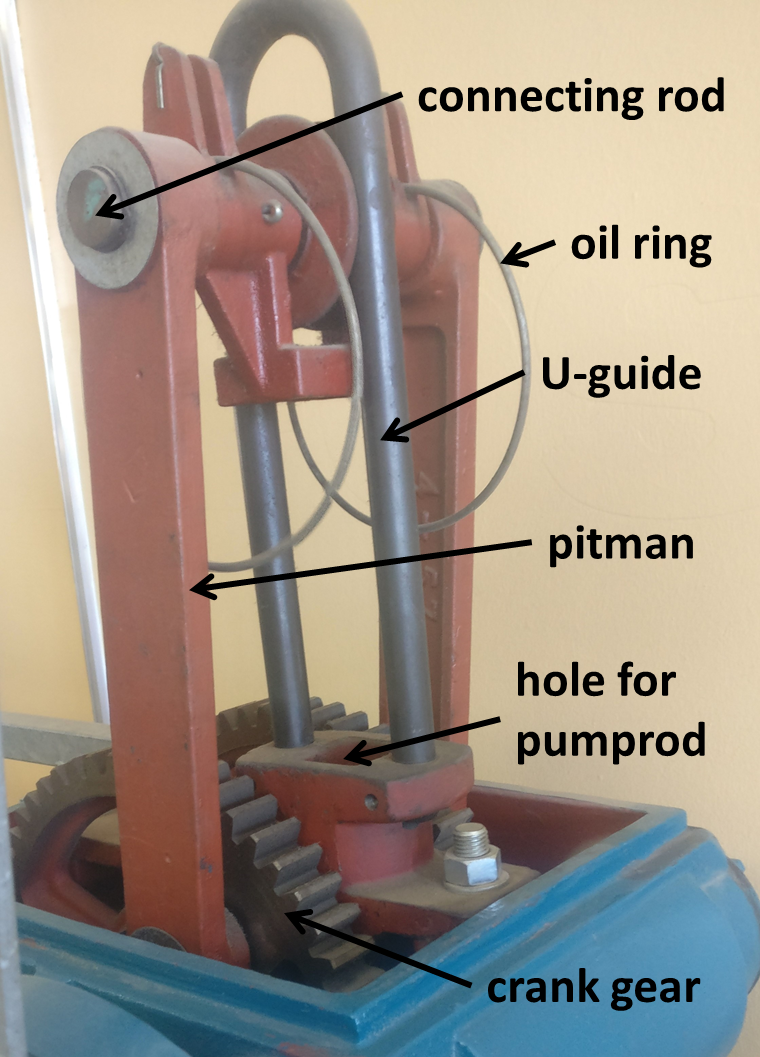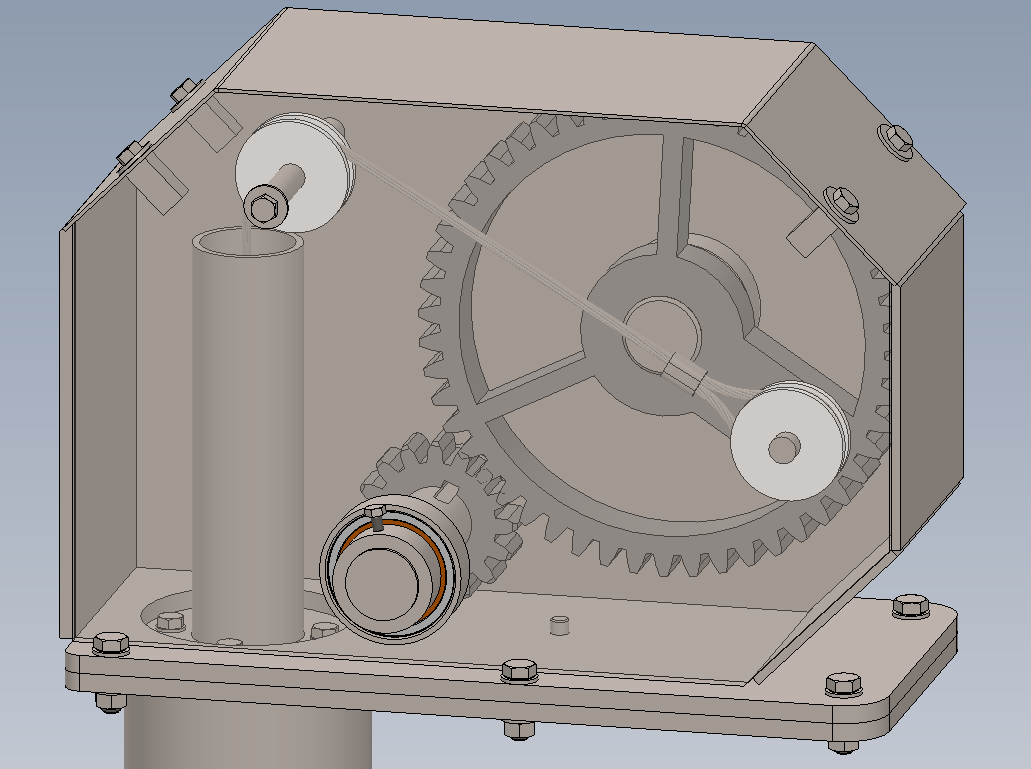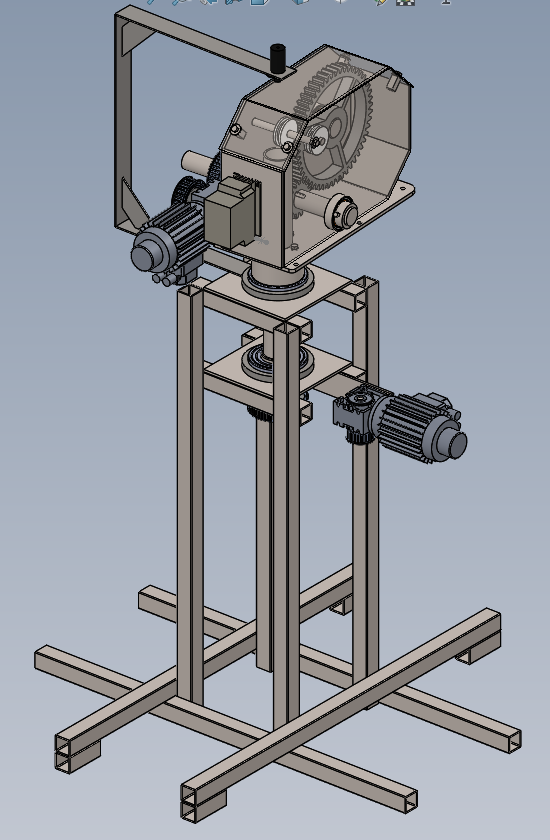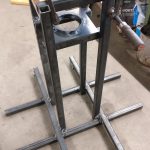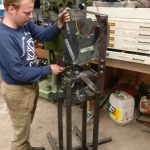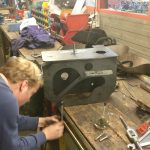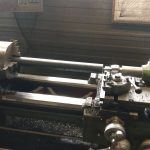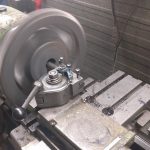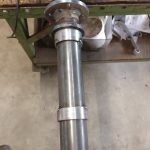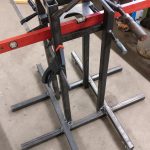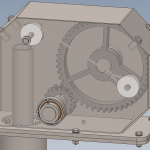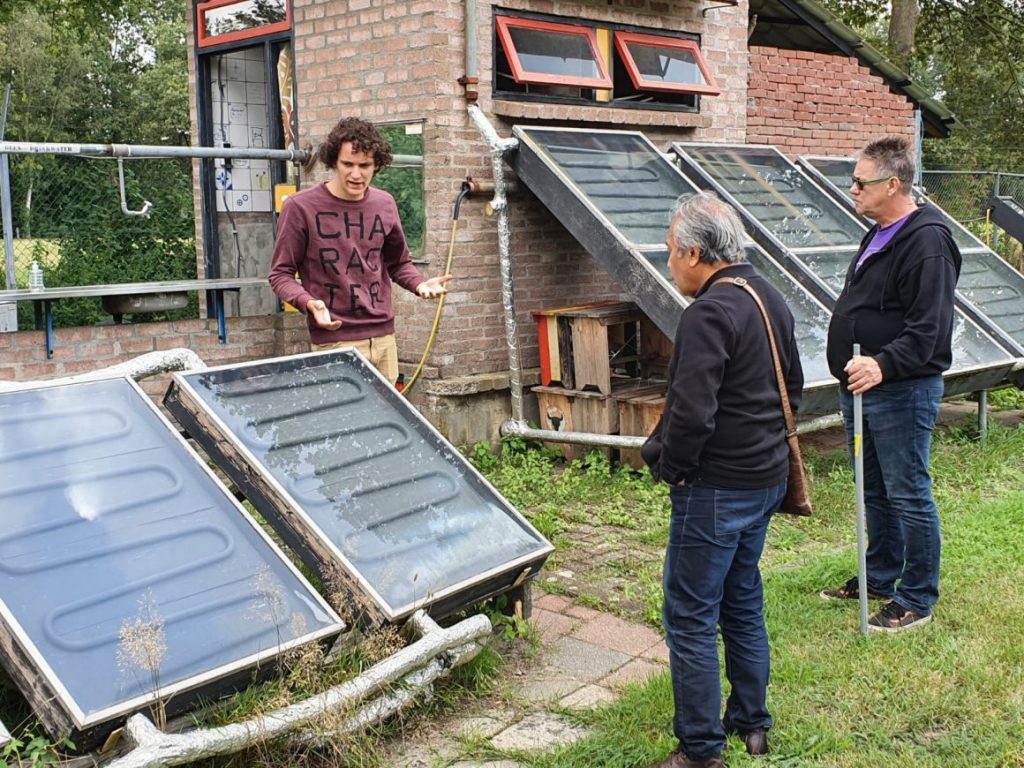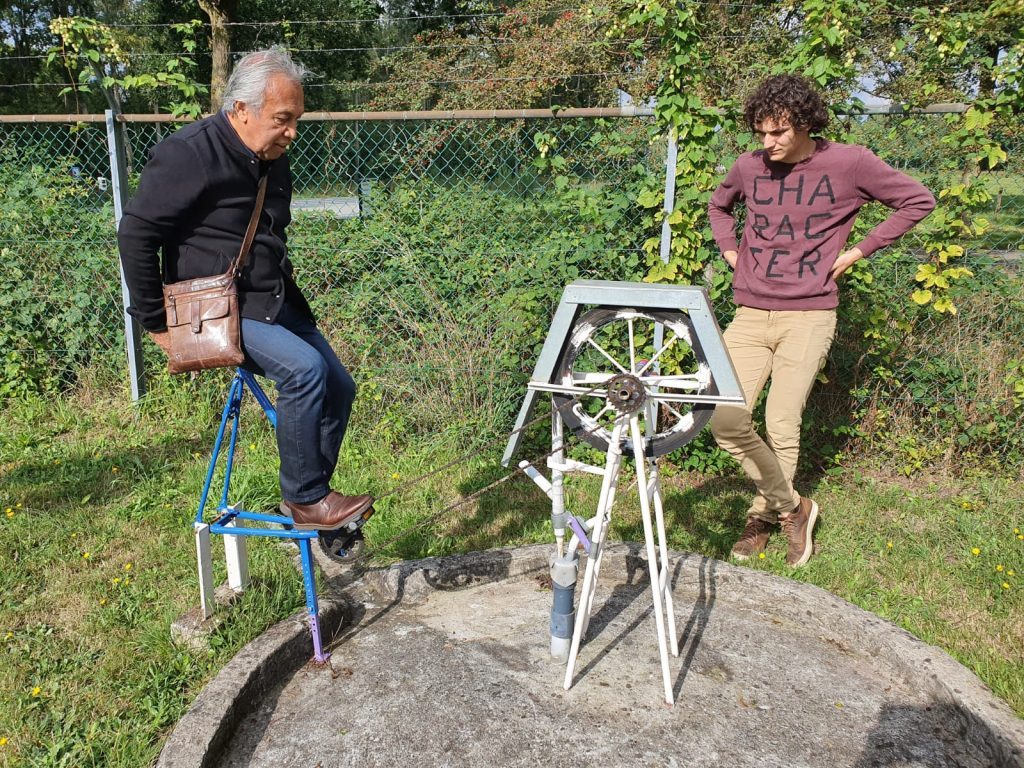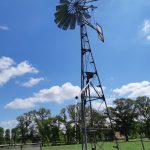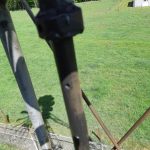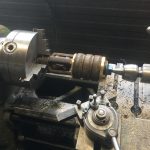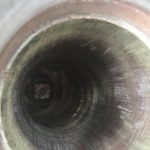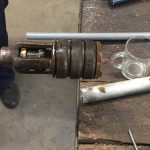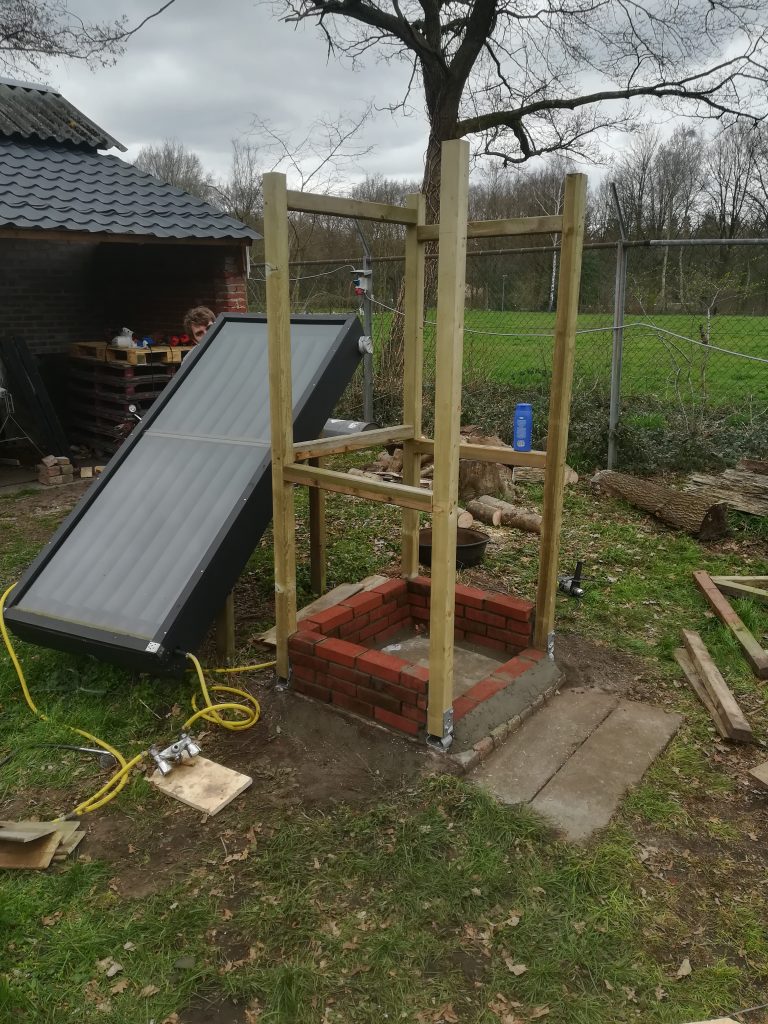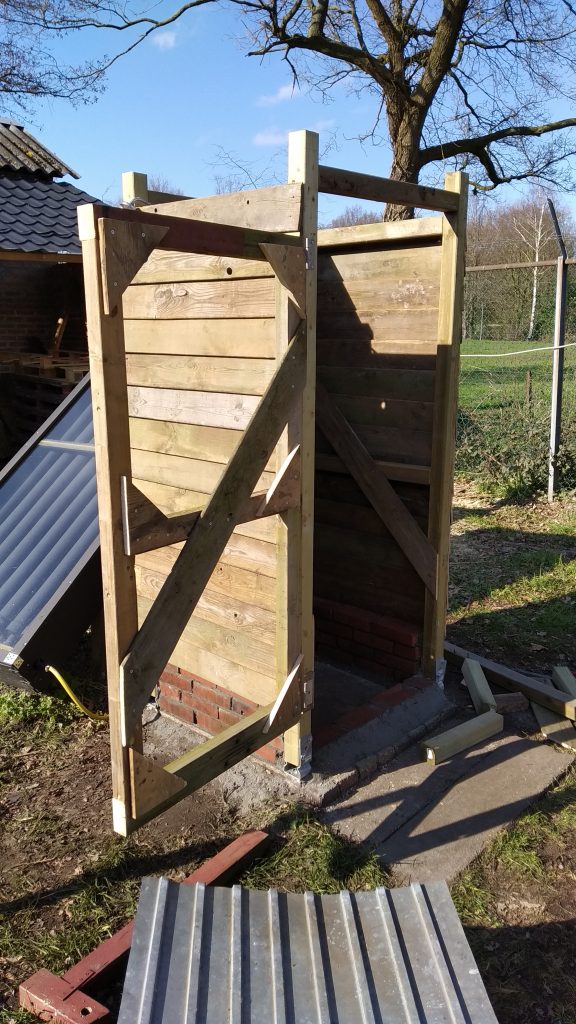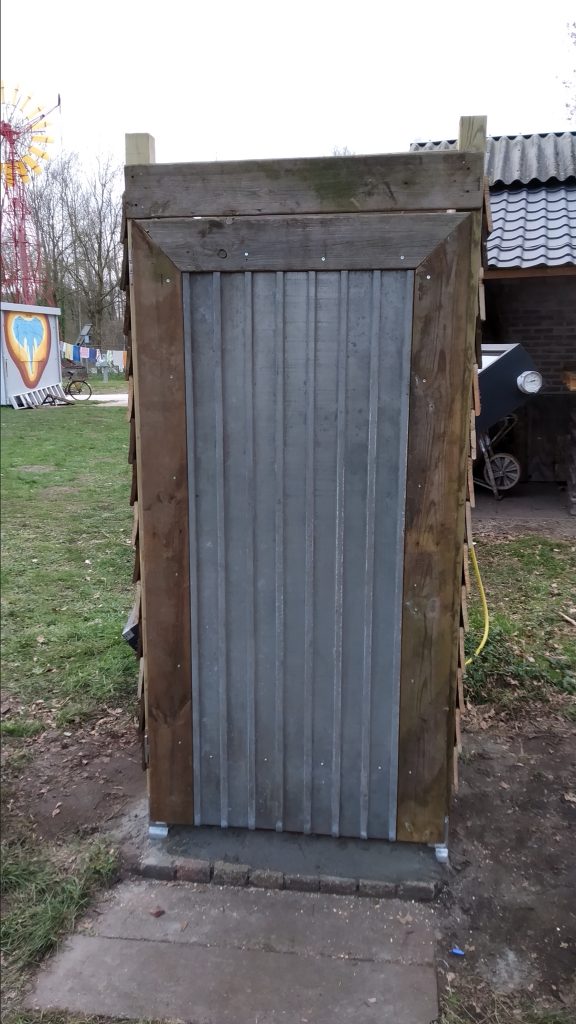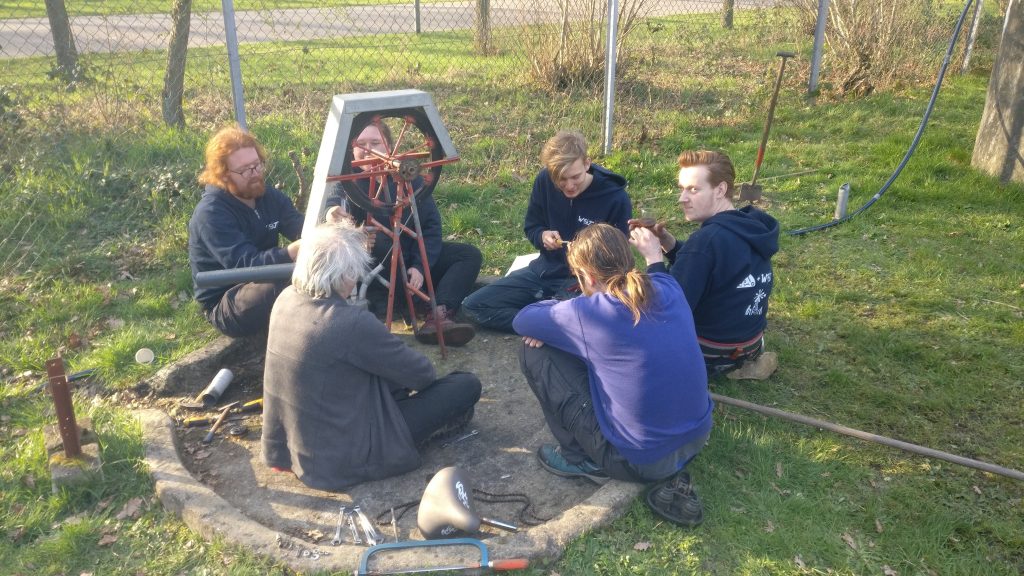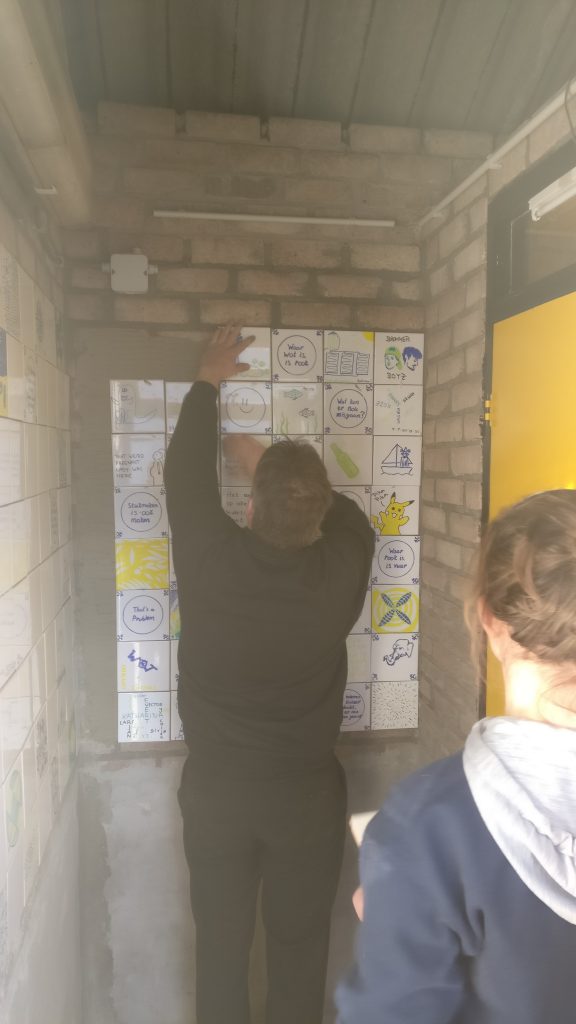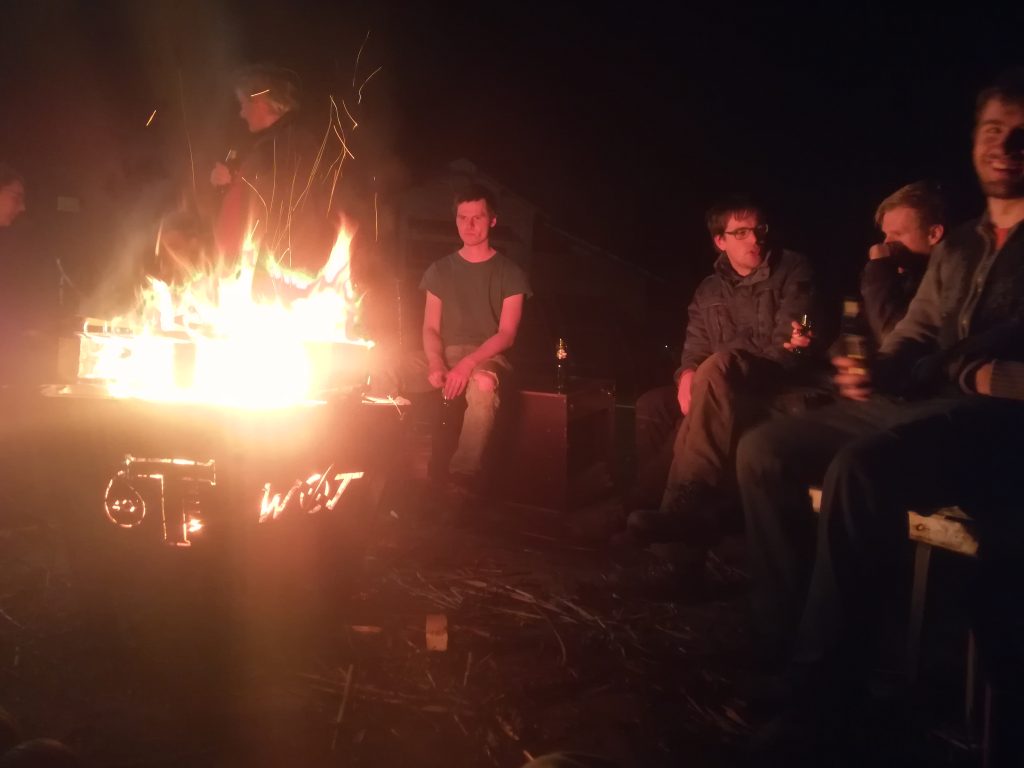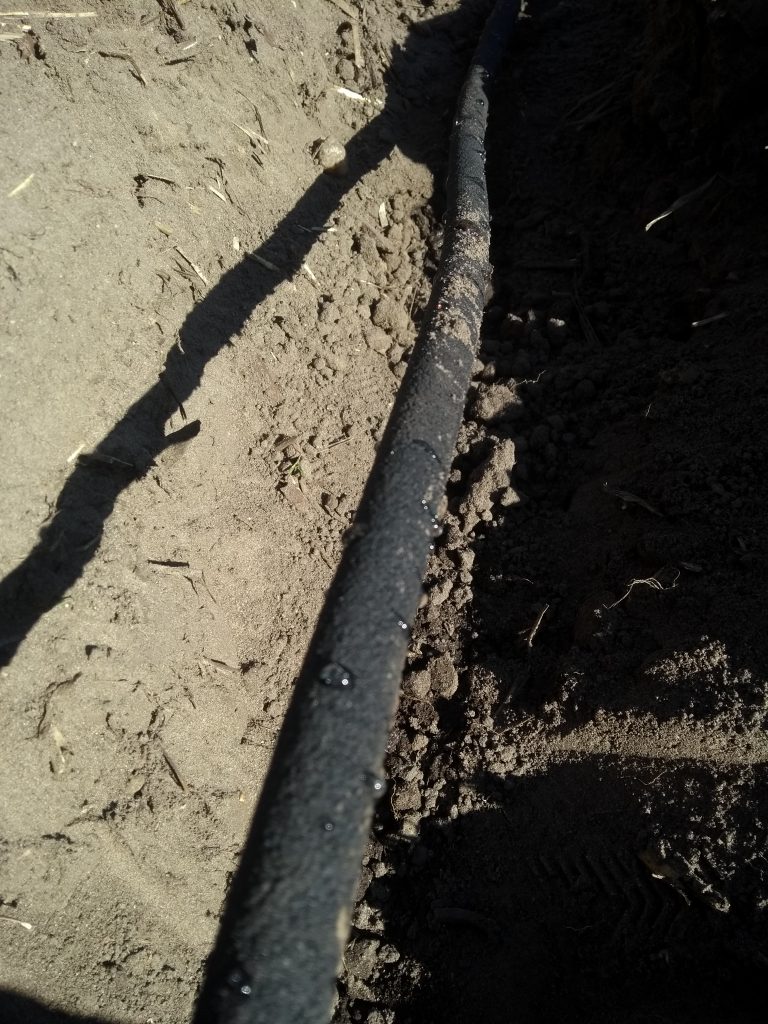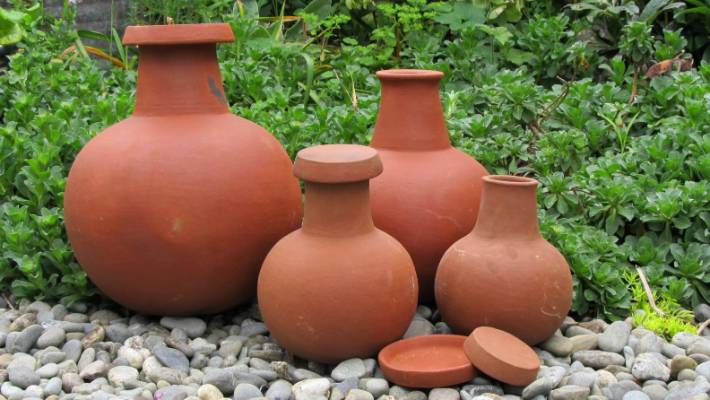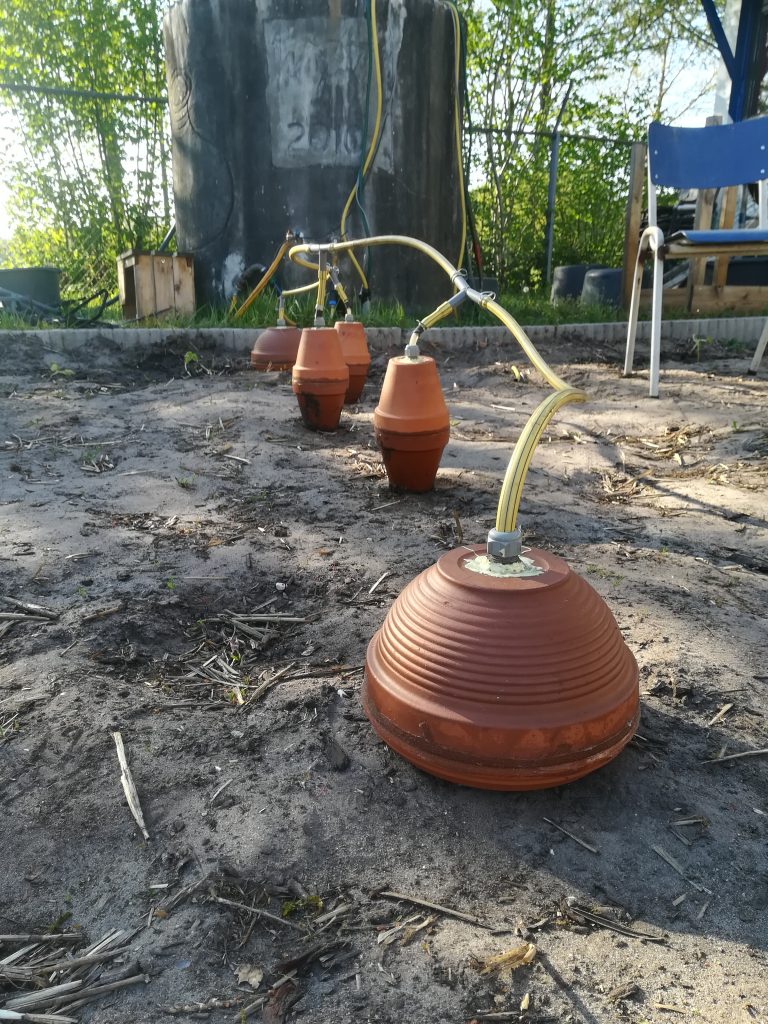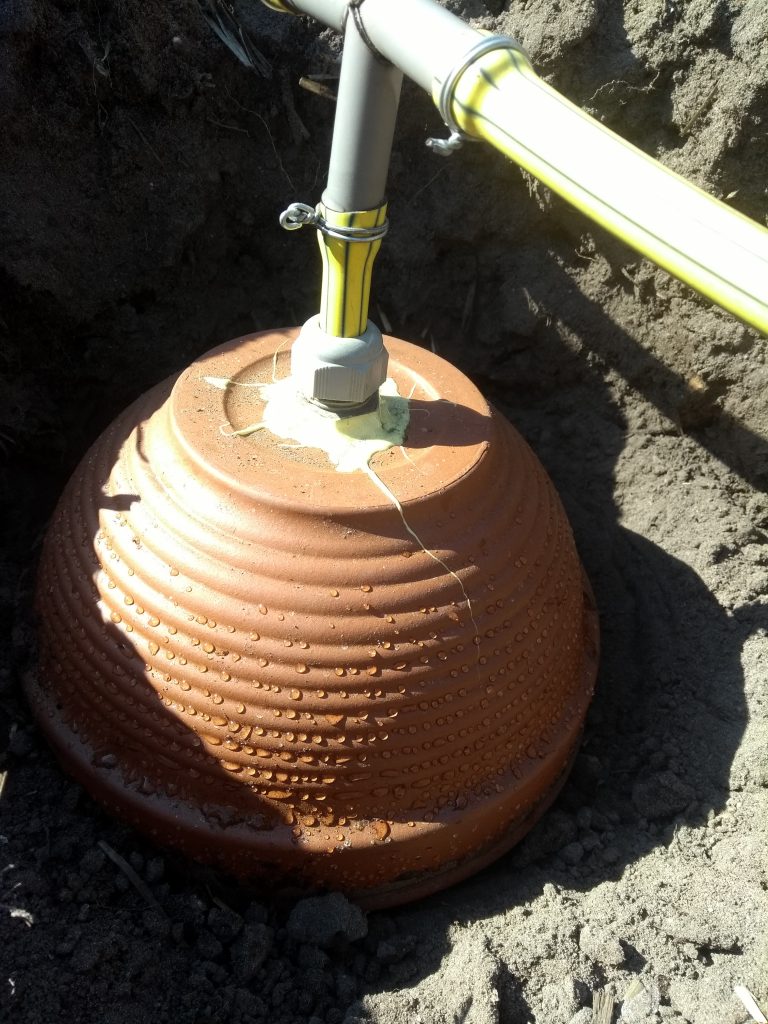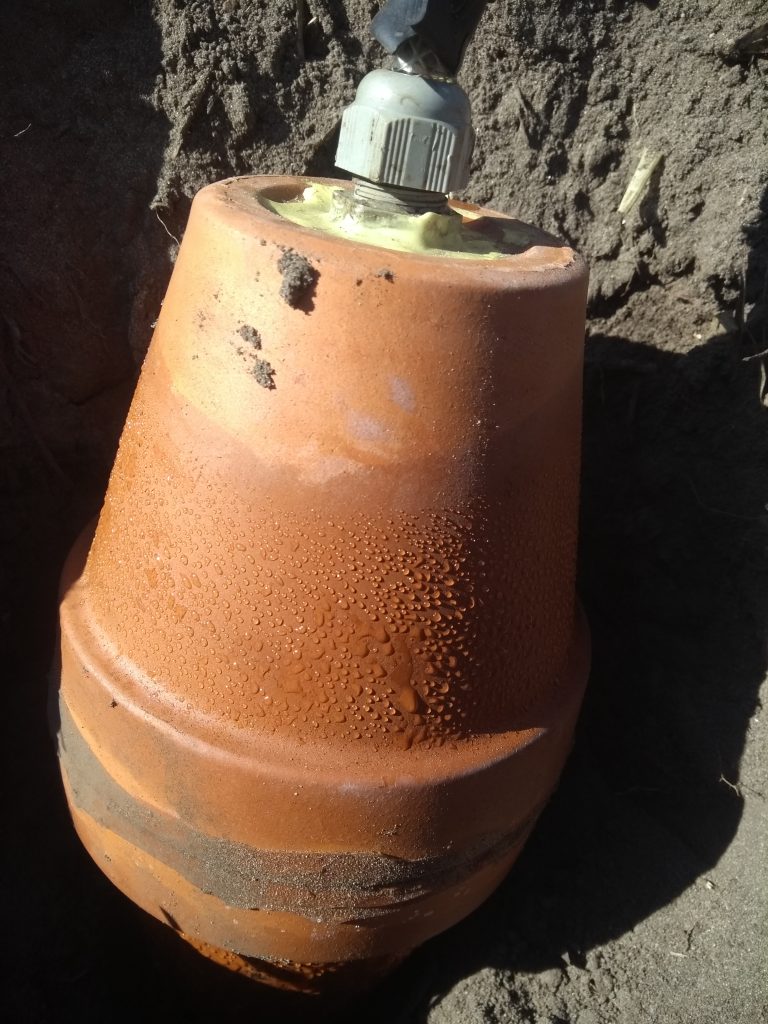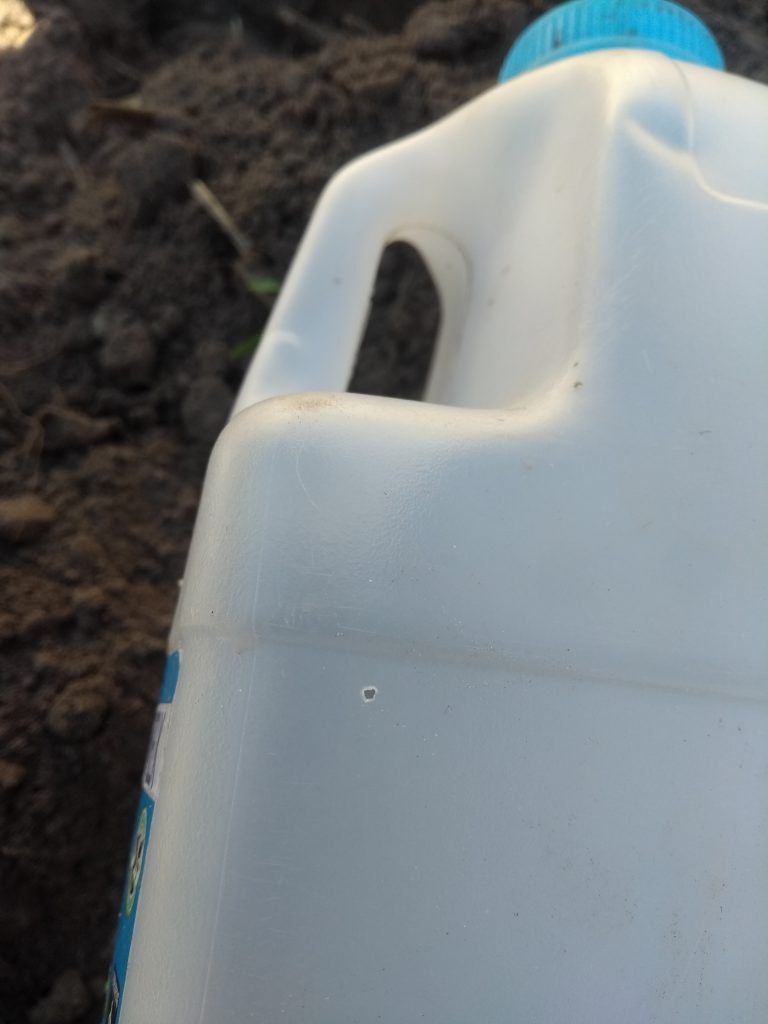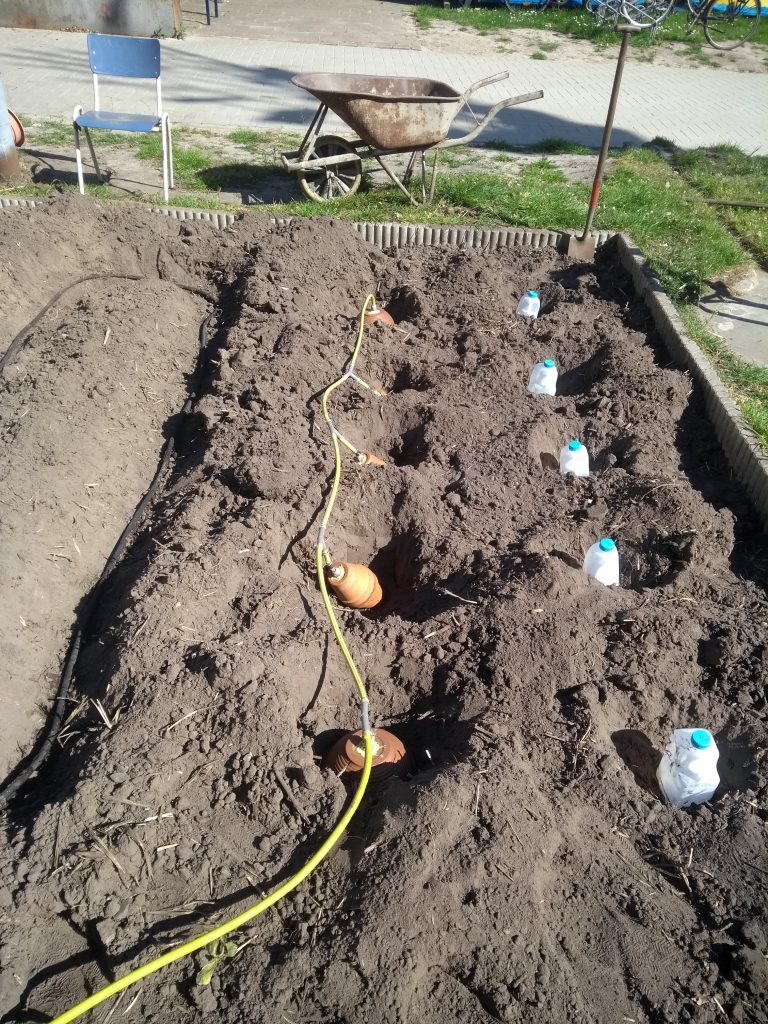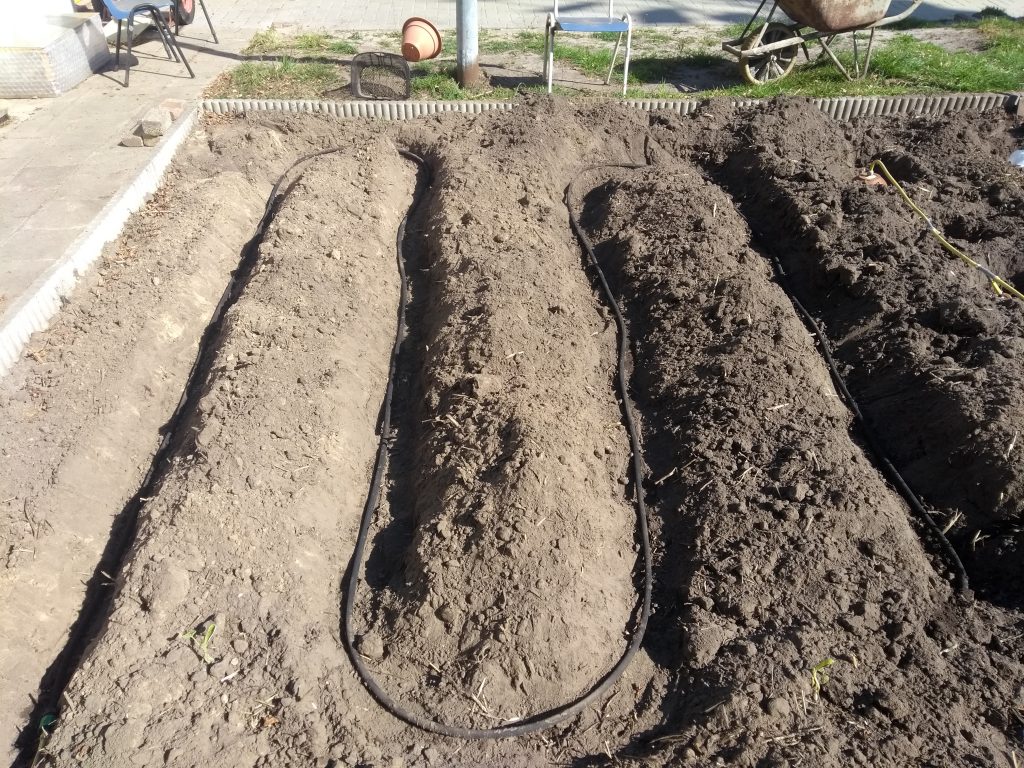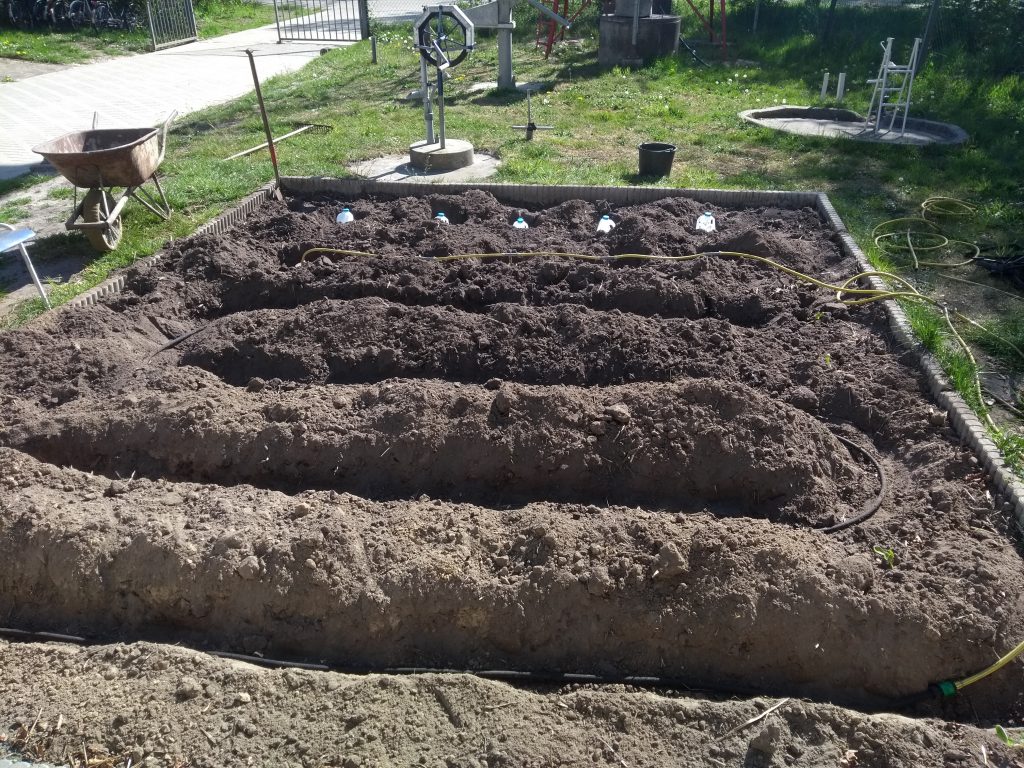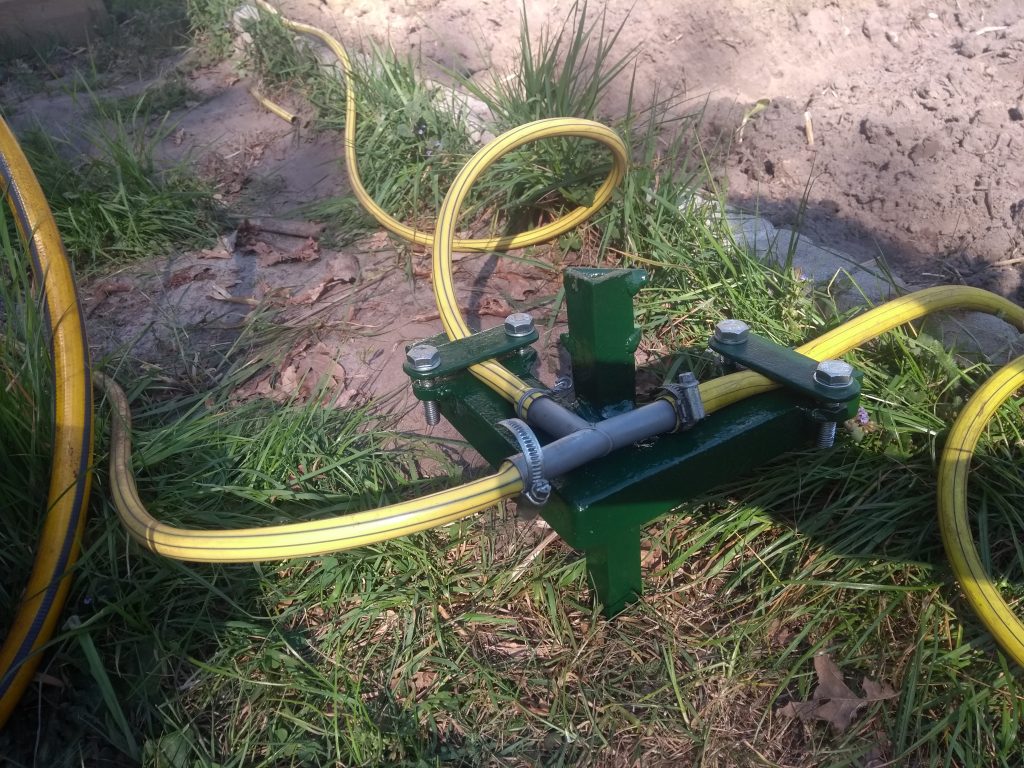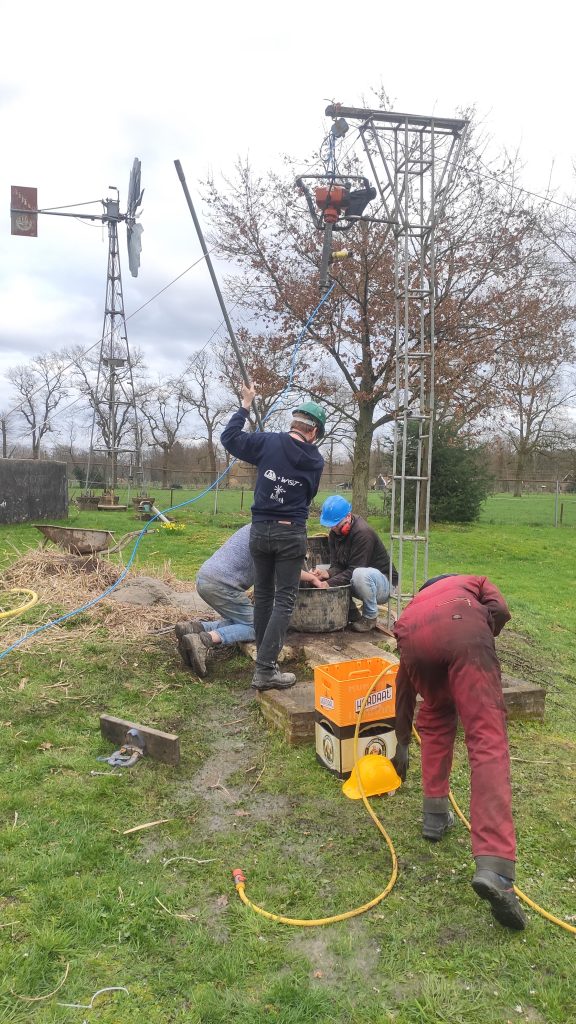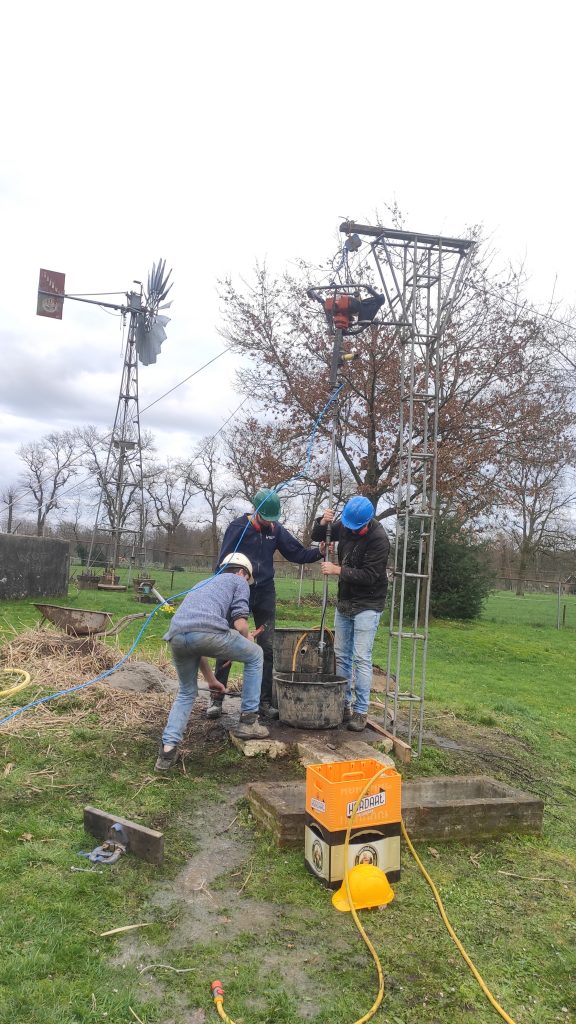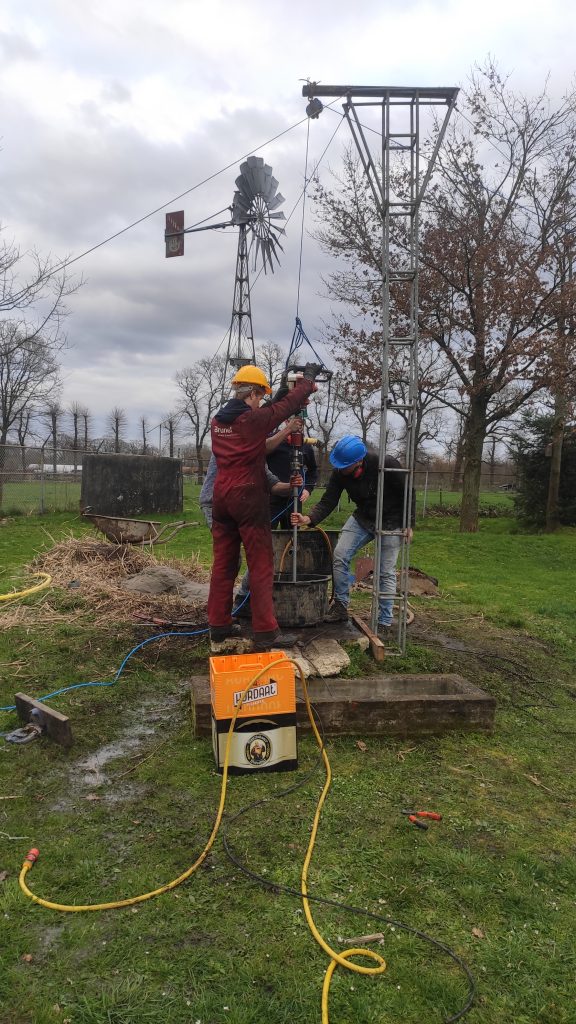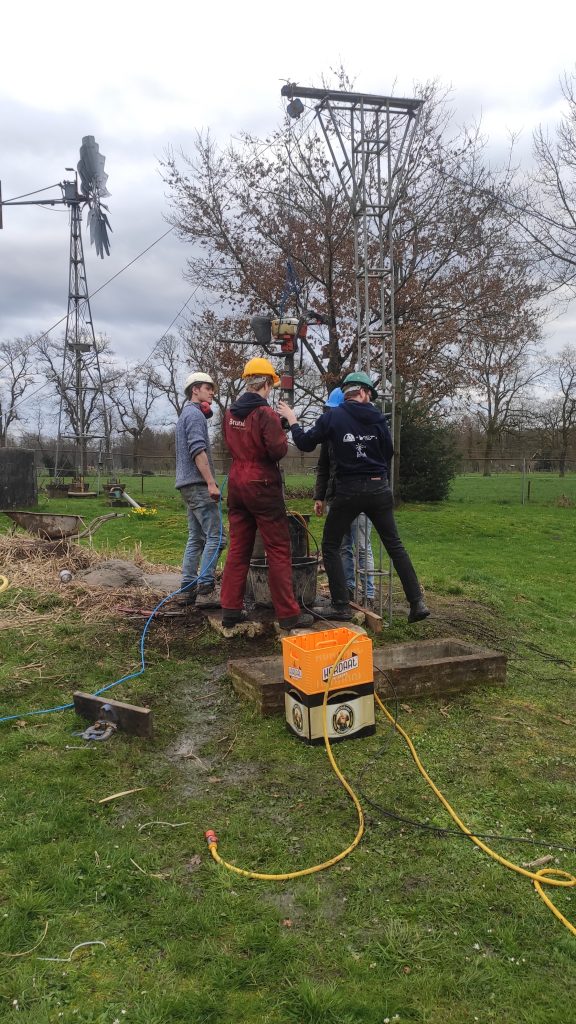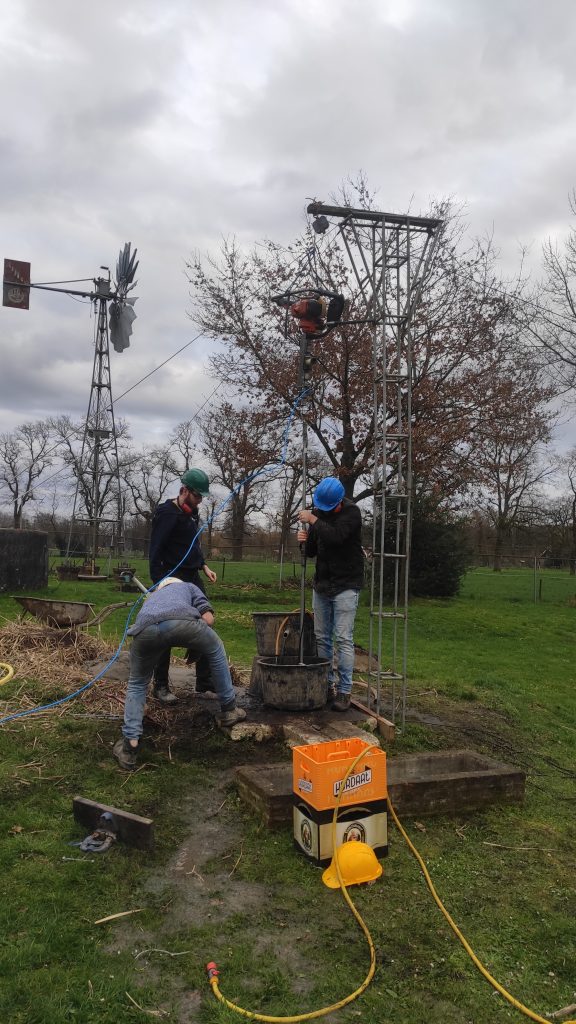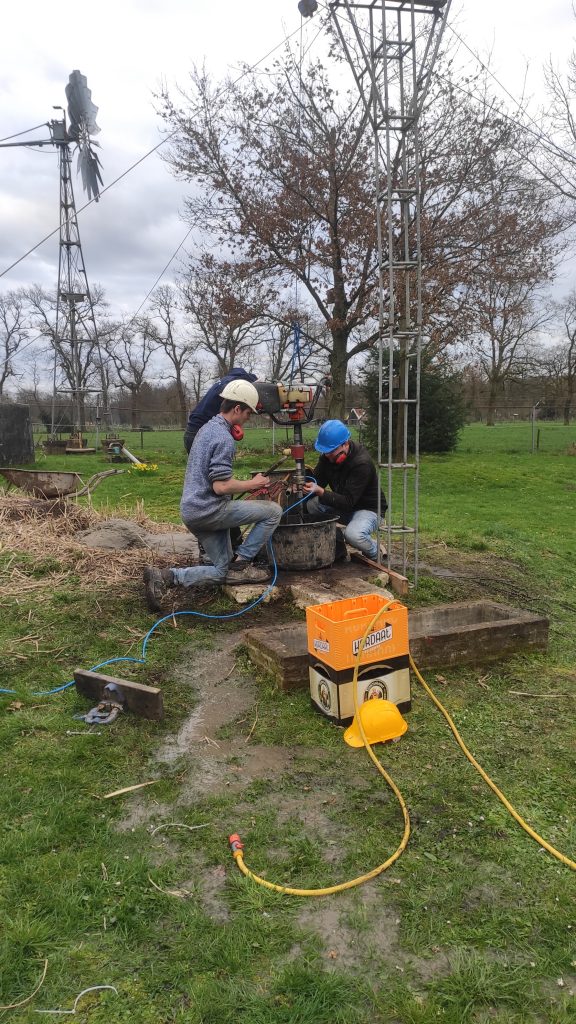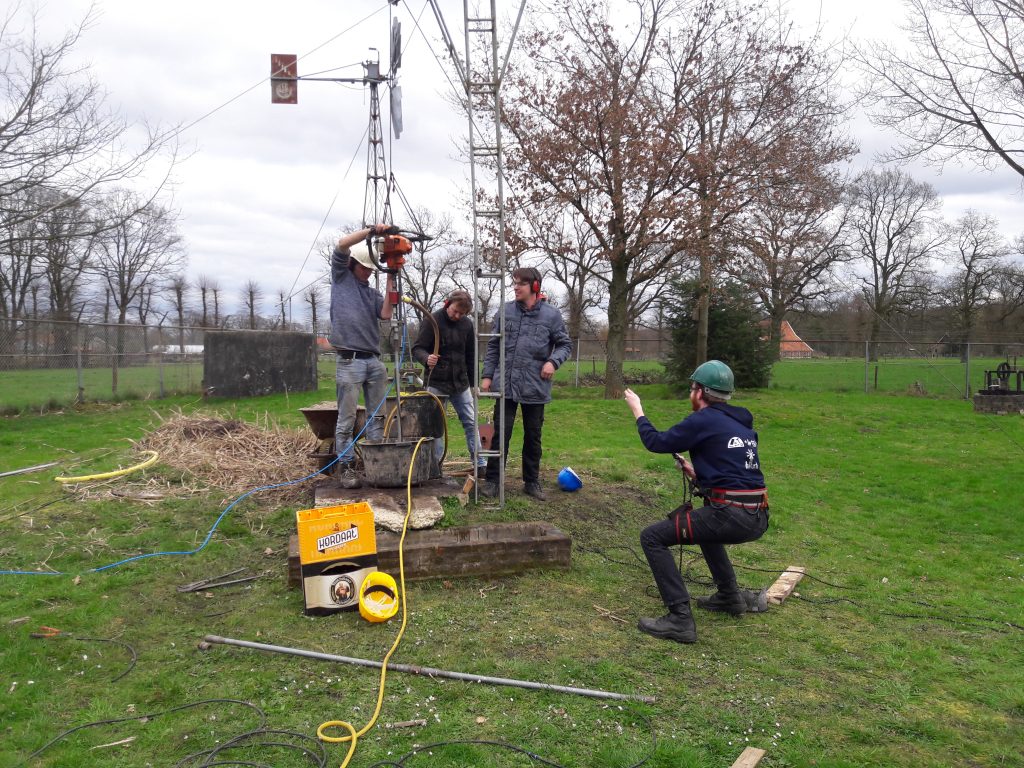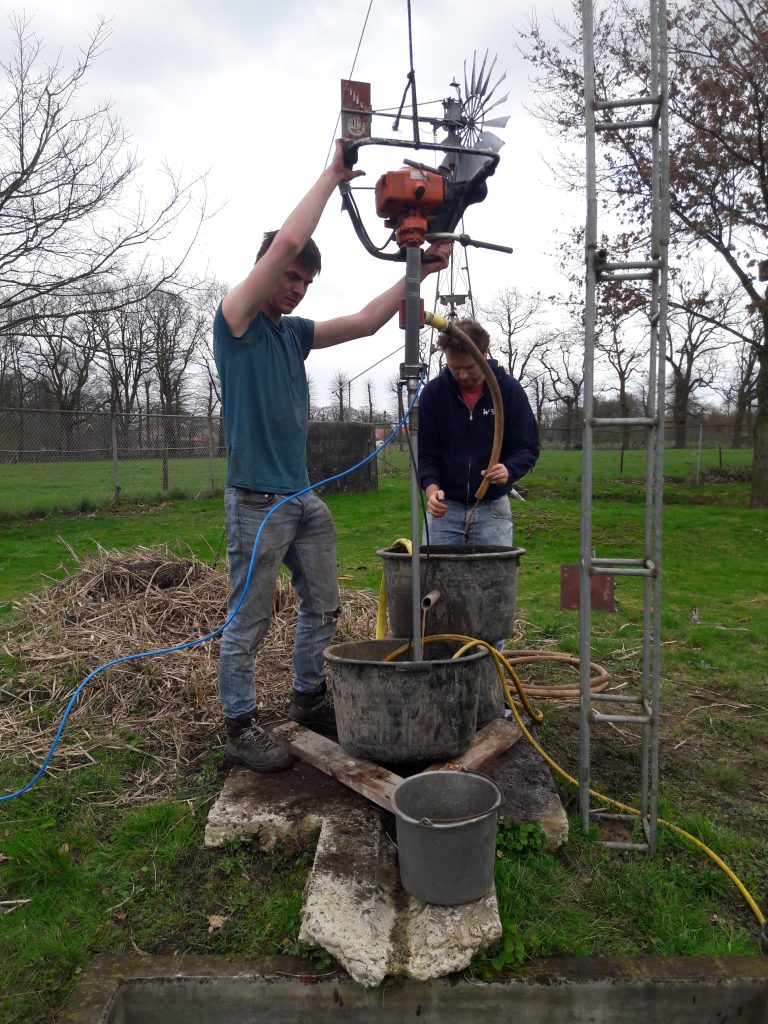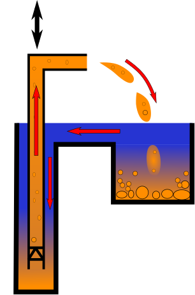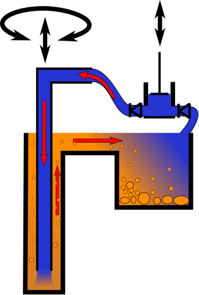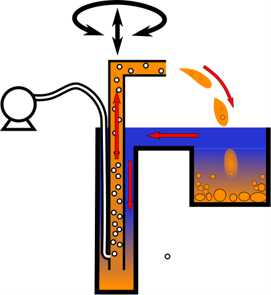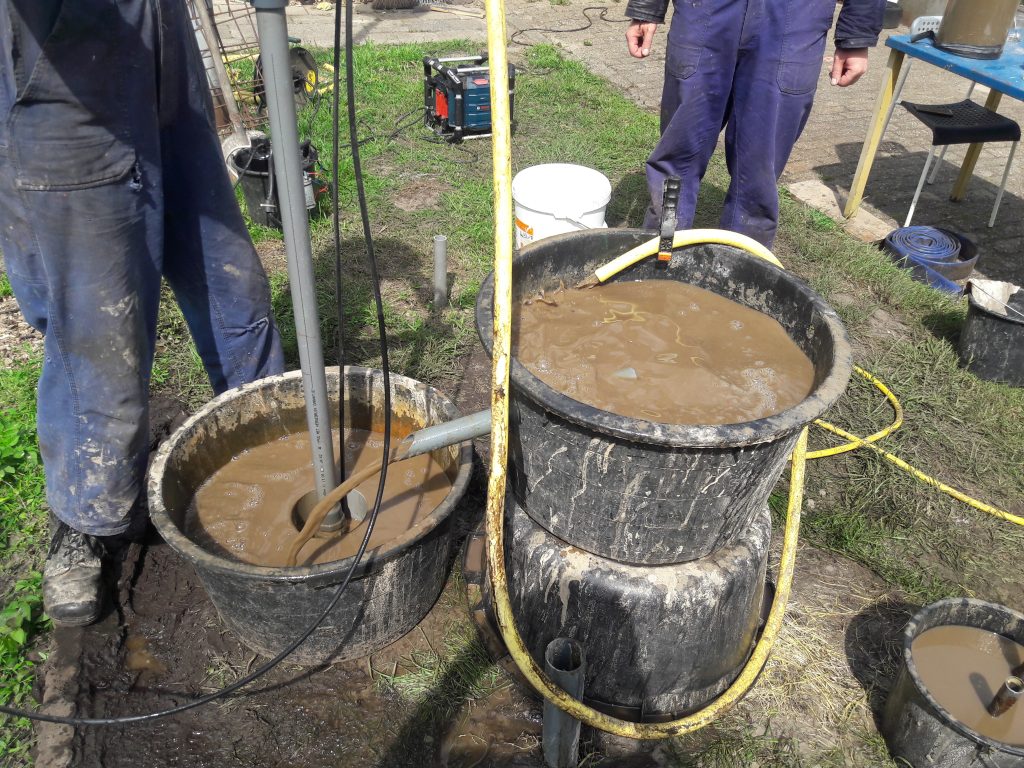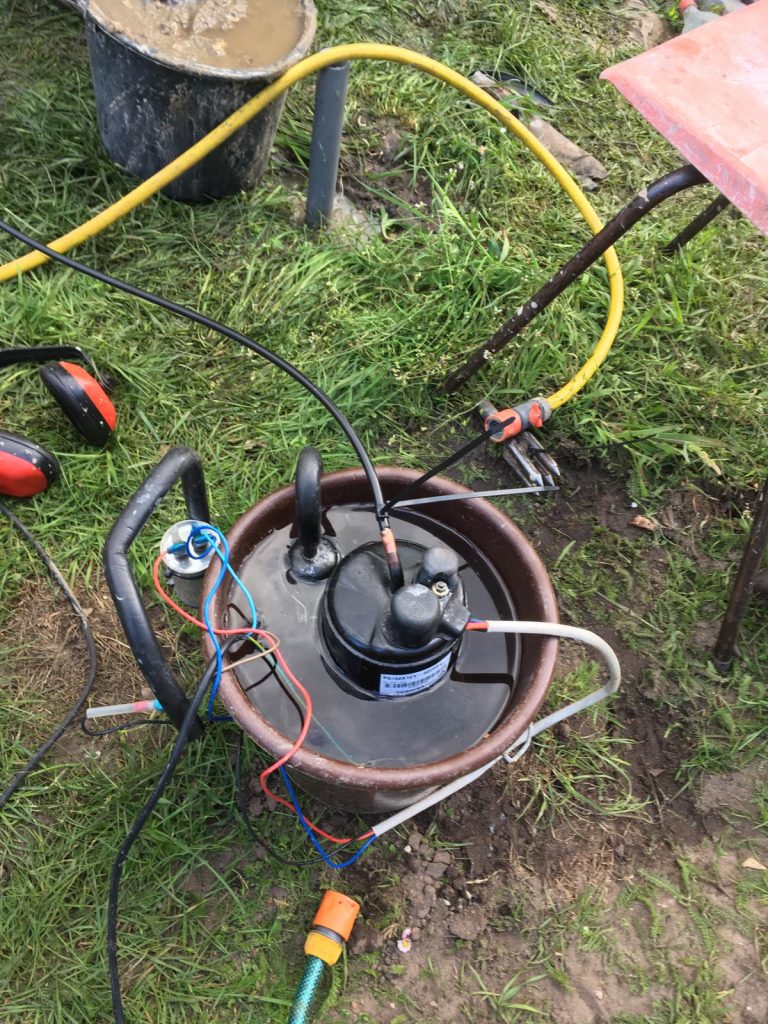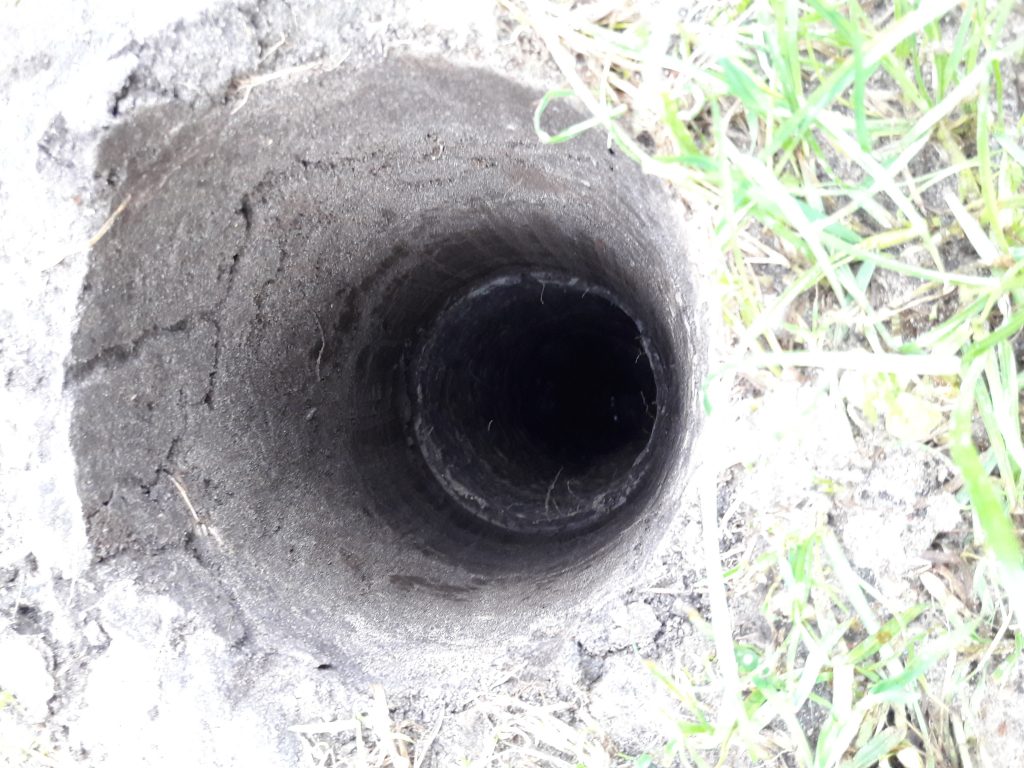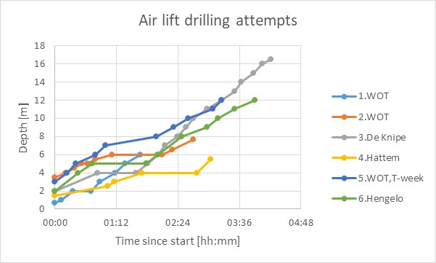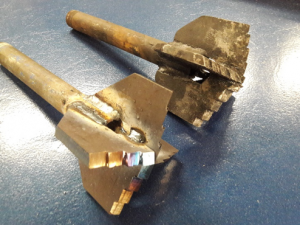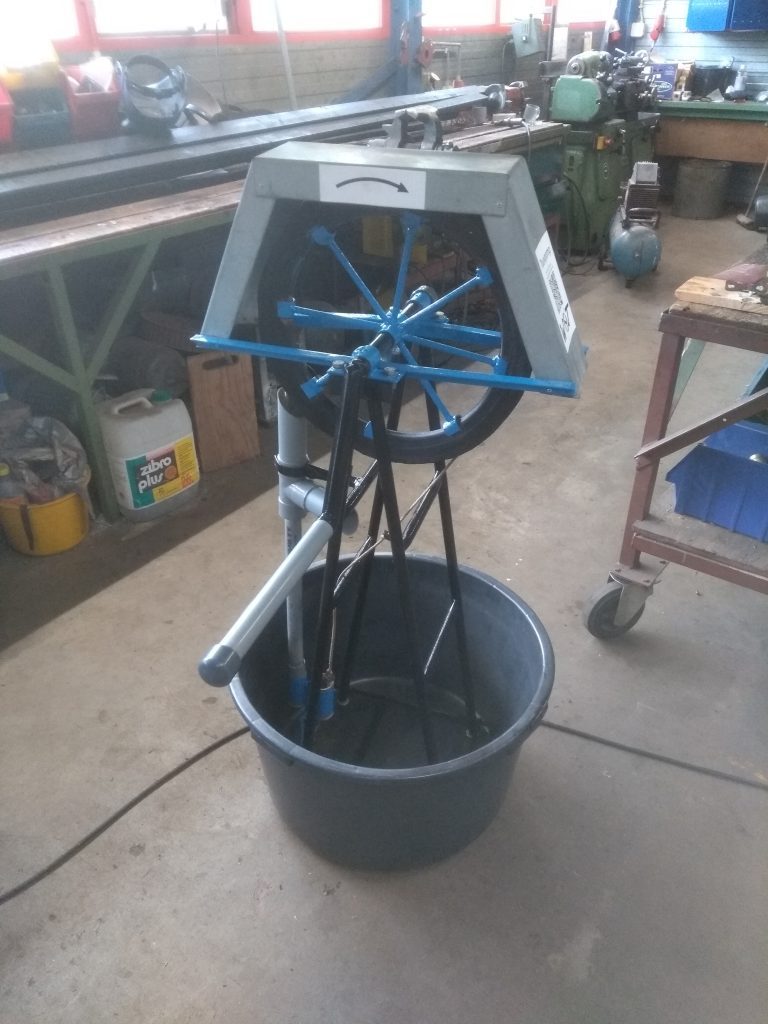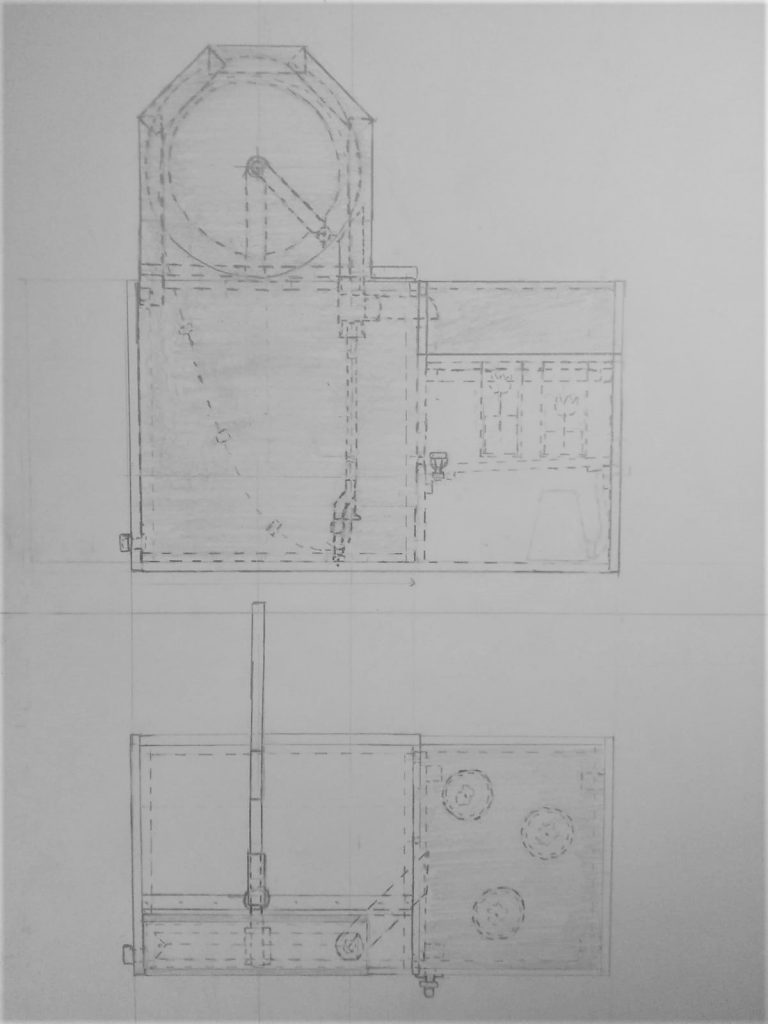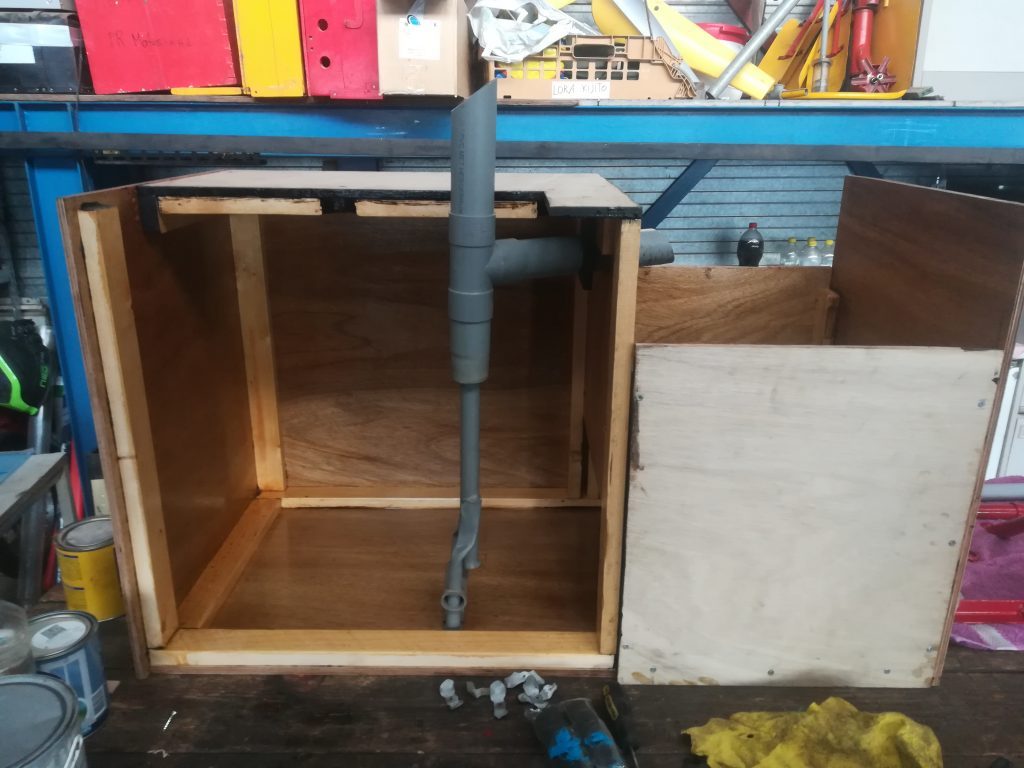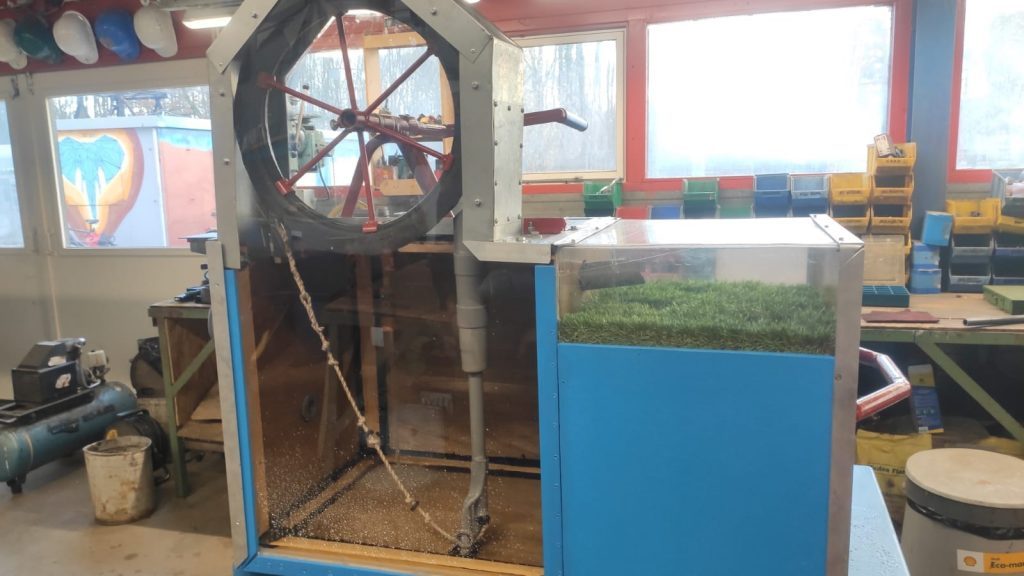At the beginning of this year several irrigation systems have been tested in the vegetable garden at the WOT. The aim of this project was to find a low cost but efficient method to irrigate crops. Three systems were tested: a bought transpiring hose, a system made from terracotta pots, and a system made from plastic bottles or jugs. To read more about the setup please read the previous blog on this project.
The garden has a relatively small area (approximately 4m x 4m) and multiple crops were grown in it. Therefore a quantitative analysis cannot be justified. Instead of looking at the crop size, the practical considerations are tested. Below is a table that summarises the findings.
| Effectiveness | Cost | Complexity | |
| Irrigation hose | + | +/- | ++ |
| Ceramic pots | ++ | +/- | – |
| Plastic jugs | – | ++ | + |
Irrigation hose
The irrigation hose was off the self and installation was simple. With a conventional garden hose the tube was connected to the water tank. The hose was buried at 20 cm so it would hydrate the ground below the surface. Often, however, the ground at the surface was dry. In general this is an advantage because moisture on the surface may evaporate. Also, weed growth is less. However, when seeds have just been sowed or the crops are still small, they cannot reach the water and thus spraying the surface with water was still necessary.
It should be noted that the pressure in our system was low (0.1-0.2 bar) because it was connected directly to a water tank. If the irrigation hose is connected to the tap (2-3 bar) maybe the water will reach the surface of the ground.
Ceramic pots
The installation of the ceramic pots required much more work. Pots needed to be sealed together, unwanted holes had to be sealed and a system had to be made to connect a hose to the pot. Then the pots were buried and connected with T-joints to the water supply. The price of such a system is comparable or higher than the price of an off-the-self irrigation hose.
The pots did however perform best with irrigation. Because they have a large height they distribute water deep in the ground as well as near the surface. This irrigation setup is therefore also suitable for seeds or young plants.
Plastic Jugs
The plastic jugs are the cheapest solution since waste materials can be used for it. The performance is however not consistent. The working principle behind this system is that because the holes in the jugs are small and the lid is on the jug, air can’t enter the jugs easily. Because of this water also can’t flow out easily. We noticed however that air quickly entered the jugs and thus water quickly flowed out. This is probably because the ground in our garden is loose sand through which air can move fairly easily. In dense clay water will likely disperse much slower. Of course, the holes could have been made smaller to decrease the flow, but the holes were already small and making them smaller would be technically challenging.
Furthermore opening and closing the jugs everytime you water is a tedious task.
Conclusion
If you want to irrigate a small patch, irrigations with ceramic pots may be interesting. Especially if you can get a hold of specially designed irrigation pots. Connecting such a system to a water storage for continuous supply is rather complex and expensive. If you prefer a more cheap and low tech solution the plastic jugs could be a good option. It is a good idea to first do some tests to see if the holes are the right size and if your ground is suitable.
If you want to irrigate a larger area, the self irrigation hose is a good option. Be aware that if you connect it to a water storage the pressure is generally low and the hose might function less well.
In the future, the WOT might research irrigation methods that are low tech and cheap but also easy to manufacture locally.

